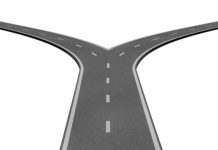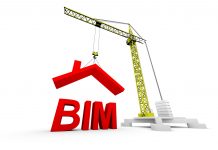John Eynon, Chair of The BIM Regions South East outlines the future of our digital built environment…
It’s 2016 and another New Year. But for the UK BIM movement this one is very different and special.
The BIM Level 2 target is this year!
When the UK Construction Strategy first set this target in 2011 it seemed a long way off, and maybe we wondered then what it all meant.
Five years have passed. What can we say has been achieved?
- The Level 2 standards are complete and set the framework for compliance;
- Most, if not all the leading government departments are using Level 2 standards in their processes and procurement;
- Many leading contractors and designers are implementing BIM to a lesser or greater extent. This is beginning to feed into supply chains, manufacturers and the like;
- Support networks are in place to help the industry such as the BIM Regions (Hubs) and the BIM 4 groups. #UKBIMCREW are also active on Twitter;
- The B1M also provide superb guidance in video format online;
- The strategic guidance for Level 3 has been published: Digital Built Britain.
Statistics and surveys are not necessarily accurate or reliable but it seems that most reasonable people accept that digital ways of working will eventually be just the way we work.
So… is it only a matter of time?
We have seen our whole lives go digital affecting all aspects of what we do and how we live. If you’ve come across the Internet of Things (IoT) or Everything (IoE) then you will know that all around us machines, objects, and sensors of all kinds are communicating and sharing data, in most cases to make our lives better. But not always.
Estimates differ but I have seen figures such as ’16 billion devices’ projected to be connected on the IoT by the end of 2014 (which was 20% up on 2013), ‘50 billion’ forecast by around 2020, and ‘one trillion’ somewhere between 2030-2050. When you bear in mind that over the same period, the world population is only projected to rise to around 9 billion people, that’s a lot of devices and information.
The Smart City movement around the world shows how digital life works on an urban or national scale. Sensors embedded in all sorts of things and objects share data about our surroundings, from the weather, environment, traffic queues, people movements, energy and carbon consumption, to the time we’re coming home so that the house will fire up it’s systems in time for our arrival.
For all of these reasons and more, migration to BIM for our industry and the like is absolutely inevitable. For the AEC industry or the AECO industry as some now call it (Architecture, Engineering Construction and Operations), then BIM and CDEs provide the missing link that joins us up to everything else. As the built environment moves into the digital age this connects us to all the other digital communities. We can no longer remain an analogue island in a digital sea.
Our industry moving into digital and BIM makes all of the above things possible; joining up buildings, assets and infrastructure, both individually and on an urban, national and even international scale. BIM isn’t about a single building or asset. No more than it’s about just design and construction. It’s about how we live in the built environment and share and use information about absolutely everything.
So the train is leaving the station moving to a new kind of industry, with new ways of living and working. Time to decide and climb on board.
You can get help and further information here:
Check out the BIM Regions – www.bimregions.co.uk
The B1M – www.theb1m.com
BIM for Beginners – www.theb1m.com/BIM-For-Beginners
John Eynon
Chair
The BIM Regions South East
Tel: 07702 126 362
johneynon@me.com
















